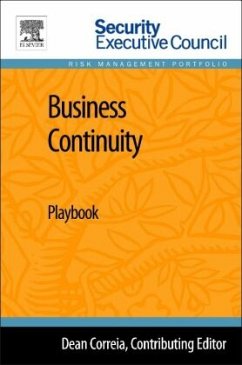
Security Leader Insights for Success
Lessons and Strategies from Leading Security Professionals
Herausgegeben: Komendat, Dave

PAYBACK Punkte
8 °P sammeln!
How do you, as a busy security executive or manager, stay current with evolving issues, familiarize yourself with the successful practices of your peers, and transfer this information to build a knowledgeable, skilled workforce the times now demand? With Security Leader Insights for Success, a collection of timeless leadership best practices featuring insights from some of the nation's most successful security practitioners, you can.This book can be used as a quick and effective resource to bring your security staff up to speed on leadership issues. Instead of re-inventing the wheel when faced...
How do you, as a busy security executive or manager, stay current with evolving issues, familiarize yourself with the successful practices of your peers, and transfer this information to build a knowledgeable, skilled workforce the times now demand? With Security Leader Insights for Success, a collection of timeless leadership best practices featuring insights from some of the nation's most successful security practitioners, you can.
This book can be used as a quick and effective resource to bring your security staff up to speed on leadership issues. Instead of re-inventing the wheel when faced with a new challenge, these proven practices and principles will allow you to execute with confidence knowing that your peers have done so with success.
Security Leader Insights for Success is a part of Elsevier's Security Executive Council Risk Management Portfolio, a collection of real world solutions and "how-to" guidelines that equip executives, practitioners, and educators with proven information for successful security and risk management programs.
This book can be used as a quick and effective resource to bring your security staff up to speed on leadership issues. Instead of re-inventing the wheel when faced with a new challenge, these proven practices and principles will allow you to execute with confidence knowing that your peers have done so with success.
Security Leader Insights for Success is a part of Elsevier's Security Executive Council Risk Management Portfolio, a collection of real world solutions and "how-to" guidelines that equip executives, practitioners, and educators with proven information for successful security and risk management programs.













